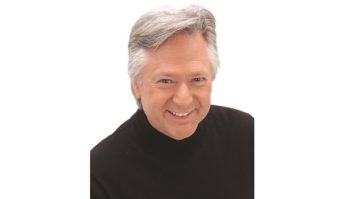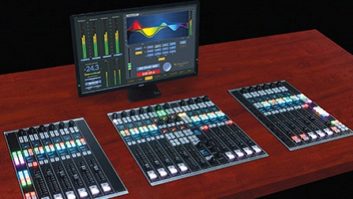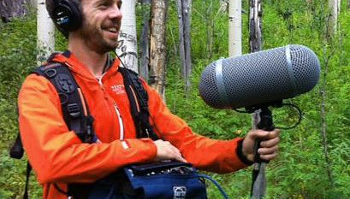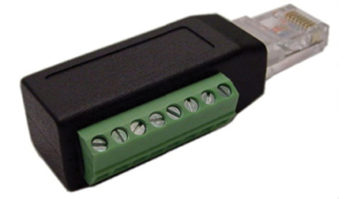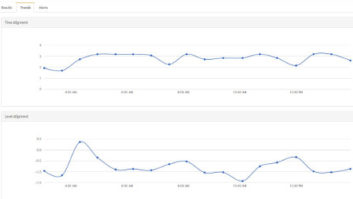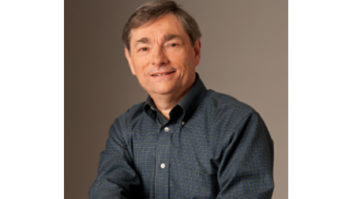Audio now comes in many flavors, and it is moving in ways that could never be predicted.
That is the message of many of the broadcast-oriented sessions at the 125th Audio Engineering Society Convention.
San Francisco’s Moscone Center is the site, and symposia will be held Oct. 2–5.
First-day topics in the Broadcast Session track include “Mobile/Handheld Broadcasting: Developing a New Medium.”
“Radio has been wireless from the beginning,” said Mark Aitken, director of advanced technology for Sinclair Broadcast Group, who will be on the panel.
“The fact is that ‘mobile’ is just an extension of the wireless capabilities of traditional television broadcasters. Mobility provides a means to reach audience segments we are locked out of today.”
But the new mobile handheld standard is a knife with two edges, according to Aitken, who serves as a member of the Technical Advisory Group with the Open Mobile Video Coalition and chairman of TSG/S4, the specialist group responsible for mobile/handheld standardization.
According to Aitken, the new standard has the potential to move TV operators into the radio business, at a time when radio does not welcome more competition.
“With the bandwidth digital TV operators have, they’ll be in a position to carry dozens of music channels if they desire,” he said. “The questions they have are, ‘What will best drive revenues, and is this a new business opportunity?’ The TV industry will gravitate to whatever provides the largest value for shareholders.”
New technologies, new studios
“The nature of the audio entertainment workplace has changed fundamentally in the past decade,” according to Bice C. Wilson. He is a principal in New York-based Meridian Design and will be a participant in the roundtable “Considerations for Facility Design,” to be held Oct. 2 and moderated by Radio World Editor in Chief Paul McLane.
“Where once we designed radio stations, now we design multimedia content creation facilities, visually rich radio environments where the space is also part of the product,” Wilson said. “We haven’t designed an audio-only project in some years.”
(click thumbnail)At Howard Stern’s studios in New York, ‘every space is used in the content including hallways, green rooms, offices and the studio,’ said Bice Wilson of Meridian Design. Facility design is among the broadcast topics at AES.
Two recent examples of his firm’s work are the Clear Channel complex in New York and Howard Stern’s studios at what is now called Sirius XM.
“At the latter, every space is used in the content including hallways, green rooms, offices and the studio. And each was design to perform acoustically and visually. In the new content creation workplace, the whole environment is content and all content is repurposed as much as possible.”
Slam, bam, crunch
On Sunday Oct. 5, “The Art of Sound Effects” will feature Sue Zizza, owner of SueMedia Productions, and her partner David Shinn, a sound designer/engineer and Foley artist.
The pair has worked on audio drama, audio books and sound effects for theater. For this session they plan to present a demonstration of manual sound effects performance and recording techniques in mono, stereo and surround sound.
“Every sound effect must reflect the character making it,” she said. “The subtext of the sound conveys the emotion of that person. You don’t just open a door, you perform it.”
A sample of the kind of dense sound design Zizza and Shinn produce can be heard at www.prx.org/pieces/24862.
According to Zizza, there is a big difference between sound effects work and Foley, which is the art of providing audio to accompany on-screen action.
“When I work on a project like an audio book, the director may tell me the character is angry at her husband,” she said. “That means I may pace back and forth on a hard surface in a certain way and I have quite a bit of latitude.
“But in Foley, if Julia Roberts doesn’t pick up a pan and throw it on screen, I can’t either. If she doesn’t walk, I don’t walk. I’m locked into the visual in terms of my movement.”
Zizza considers herself a performer and a technician and will show why crinkling cellophane to simulate fire no longer cuts it with today’s sophisticated equipment.
“We have to listen differently now,” she said, “because the mics and recorders hear differently, so the art and skill have to evolve too.”
Louder!
Another Friday session is “The History of Audio Processing.”
“Digital algorithms have enabled improved quality and loudness with respect to the same type of processing systems a couple of decades ago,” said Frank Foti, president of Omnia Audio.
“We are now able to generate transmission signals that border on the best theoretical limits. By example, the FM stereo multiplex signal we generate provides protection to the 19 kHz pilot tone that rivals the system noise floor. That was never possible with older, analog systems.”
When asked about the changes he sees over the next few years, he was not shy with his opinions.
“It is the quality,” he said. “Broadcasters and record producers are at odds with content. Producers and mastering engineers are creating hypercompressed music, and then broadcasters throw gas onto the fire with more dynamics processing. Houston, we have a problem!
“I do believe there’s a subliminal boost in the listeners’ minds when they can feel the punch of the signal. But they don’t wish to have audio that’s over the top.”
Eric Small, chief technical officer and founder of Modulation Sciences, will also participate in this session. He first learned about high-quality audio as chief engineer of a classical music station, then spent two years recording under producer Phil Ramone. He later became a “radio doctor” traveling the world making rock stations louder. Teaming with fellow session participant Orban, he collaborated on the development of the Orban Optimod 8000.
If You Go
(click thumbnail)
What: 125 AES Convention
Where: Moscone Center, San Francisco
When: Oct. 2–5; exhibits Oct. 3–5
How Much: Advance full registration starts at $295 for members and $395 for others. See site for students, special event registration, exhibit floor only and other info
“After studying occupied bandwidth and protection ratios,” said Small, “I’ve concluded that much radio processing is unnecessary.”
The panel includes processing innovators Bob Orban, Marvin Caesar, Mike Dorrough, Dick Burden and Glen Clark, and is moderated by Emil Torick.
From here to there
“Audio Transport” is on Saturday Oct. 4; Mike Uhl, director of western sales for Telos, Omnia and Axia Audio, will be one of the speakers. He will address the topic of Quality of Service and how one’s distribution requirements dictate the best way to send audio from point to point.
“The first level of service is moving multiple channels of linear, digital audio through an Ethernet system or network,” he said.
“This is a closed system that can handle thousands of inputs and outputs, mix them together, provide level control and digital signal processing. The next level puts multiple channels of compressed digital audio onto a network for distribution. This works best where you have many sites or multiple studios.
“The third level of service is Internet. You can’t get EQ’d phone lines anymore, and ISDN is on the wane because the phone companies no longer want to provide that service. One of the problems with the Internet is that bandwidth is not guaranteed; it changes depending on the load placed on the network. You need an adjustable bit rate that takes advantage of all the bandwidth when it is there, but with an adjustable buffer to avoid lapses.”
Another panelist in that session is Chris Crump, director of sales and marketing for Comrex.
“Technology is redefining what a ‘broadcaster’ really is,” he said. “I think the industry is faced with a looming paradigm shift that is forcing traditional broadcasters to become content creators. We are all having to adapt to the tastes and habits of the consumer. We’re always looking for ways to help create tools that allow for the most creative and unique content imaginable.”
The chairman of Broadcast Sessions is David Bialik, who is also an independent systems engineering consultant. He will moderate the Oct. 5 session, “Internet Streaming.”
“I think there is a brewing loudness war over the Internet and the newer generation of engineers who are focused on computers does not know what to do when they have to peak at ‘zero,'” he said. “I’m seeing a lot of Internet streamers going over ‘zero’ and not understanding why their audio is falling apart.”
And as to the future of the Internet?
“I envision people listening to the Internet in their cars,” he said. “They’ll be listening to New York’s WOR(AM) while driving in California. The manufacturers are dying to put this in. I wish them luck designing the graphic human interface for that!”
Radio World Contributing Editor Skip Pizzi is part of the streaming panel.
For those in a touring mood, there will be a technical tour of Dolby Labs on Tuesday, Oct. 2; and for the very technical-minded, a Sunday tutorial, “FPGA for Broadcast Audio,” is planned. Girish Malipeddi of Altera Corp., a designer of floating point programmable array chips, will be hosting.
Some other sessions of interest for radio broadcasters include “Audio & Non-Audio Services and Applications for Digital Radio” on Thursday, and “Listener Fatigue and Longevity” and “Audio Transport,” both Saturday. In all there are 11 broadcast-related sessions planned for the AES convention.
The broadcast schedule can be found at http://www.aes.org/events/125/.
The convention’s technical program includes other sessions and events of interest that are not broadcast-specific. They include tutorials, live sound seminars, tours (including Industrial Light & Magic), master classes and historical and special events.
The AES exhibit floor is open for three days, Oct. 3–5.
General show info can be found at www.aes.org/events/125.








